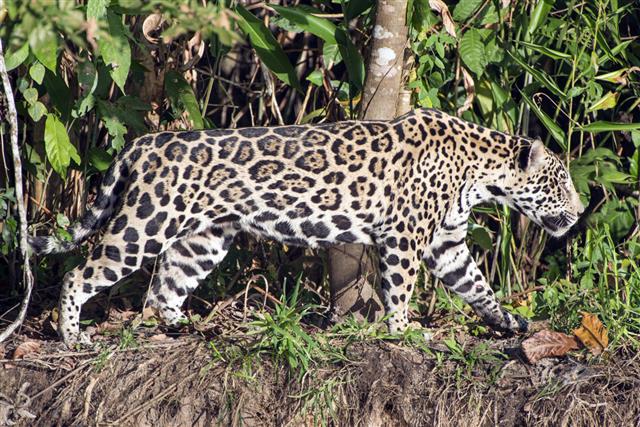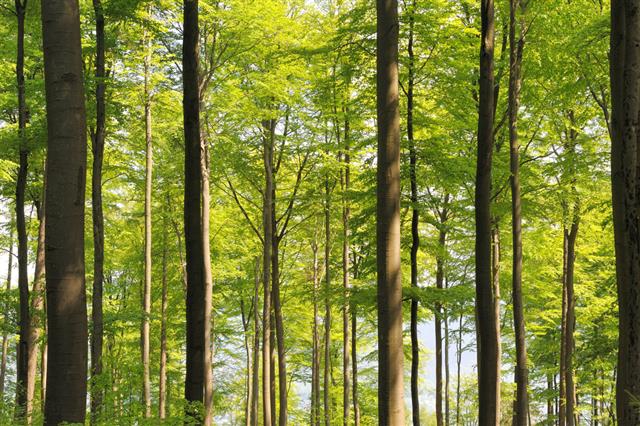
An overview of the major biomes of the North American continent, which aptly highlights the great deal of diversity that is observed on the planet Earth.
A biome is defined as a community of microorganisms, plants, and animals, within a specific geographical extent with uniform climatic conditions. The diversity in plant and animal life across the world is unparalleled. North America alone has more than a 150 identified eco-regions. Overall, there are 15 terrestrial and 12 aquatic biomes in the world, all of which are further categorized into several subregions.
Major Biomes of North America
Spanning an area of 9,540,000 sq mi, the North American continent makes up about 4.8 percent of the total surface area of the planet. With such a vast expanse, it is no surprise that a great deal of diversity is seen in this region. North America is broadly categorized into six major biomes, namely the Tundra biome, Coniferous forest biome, Prairie biome, Deciduous forest biome, Desert biome, and the Tropical rainforest biome.
Tundra Biome
The Tundra biome is typically characterized by harsh climatic conditions, lack of evergreen vegetation, and permafrost (frozen soil). Even though the climatic conditions are unsuitable for human habitation, several plants and animals have adapted themselves to the harsh climate prevailing in this region. The plant species found in the Tundra biome include various species of shrubs, mosses, grasses, and lichens, while the animal species include polar bear, Arctic fox, snowy owl, Tundra swan, etc.
Coniferous Forest Biome
The Coniferous forest biome is a North American biome typically characterized by a wide variety of coniferous trees, such as pine, fir, and spruce. The average temperature in this region in winter is as low as 14 °F, while the average rainfall in this region ranges between 14 – 29.5 inches. A range of herbivorous animals inhabit this region, feeding on the leaves of coniferous trees that grow here in abundance. In the cold season, these animals either hibernate or migrate to warmer parts of the continent to protect themselves from the harsh climate.
Prairie Biome
Also known as the North American prairie, this biome is predominantly characterized by a wide variety of herbaceous plants and grasses. Spanning an area of 1.4 million sq mi, these grasslands experience annual precipitation of 12.6 – 21.7 inches. The plant species found in this region include big bluestem grass, blue grama grass, buffalo grass, etc., while the animal species include bobcats, Prairie dogs, coyotes, the American bald eagle, badgers, etc. Found in abundance at one point of time, the bison finds itself on the verge of extinction today; courtesy, large-scale hunting.
Deciduous Forest Biome
The deciduous forest biome is found in the eastern region of North America. On an average, this region experiences an annual rainfall ranging between 30 – 60 inches, while the average annual temperature here is around 50 °F. The plant species native to the North American deciduous biome include the American beech, white birch, white oak, etc., while the list of animals found in this region features the American black bears, coyotes, the American bald eagle, etc.
Desert Biome
In North America, the desert biome comprises deserts such as the Sonoran Desert of southern Arizona and the Mojave Desert of California. The region is predominantly dominated by drought-resistant species, such as the saguaro and Joshua. Only a few animals have been able to adapt to the harsh climate prevailing in these areas, namely the Sonoran Pronghorn antelope, Sonoran toad, armadillo lizard, bobcat, etc.
Tropical Rainforest Biome
The tropical rainforest biome in central America is by far the richest biome in context of biodiversity. The average rainfall in this region easily crosses the 200-inch mark every year, while the temperature fluctuates between 65 – 90 °F. These forests are typically characterized by a wide variety of broadleaf evergreen trees. As the vegetation here is dense vegetation, sunlight seldom reaches the ground, which makes it difficult for short vegetation to survive. One can also witness a wide range of epiphytes in this region. The animal species native to the central American rainforest include several mammals, insects, reptiles, and bird species. One of the most magnificent animals found in this region is the jaguar.
That must have given you a rough idea about the diversity of our planet. However, there are several other biomes of the world that are bound to fascinate you. While some of these are extremely harsh in terms of climate, some are extremely rich in terms of biodiversity.








